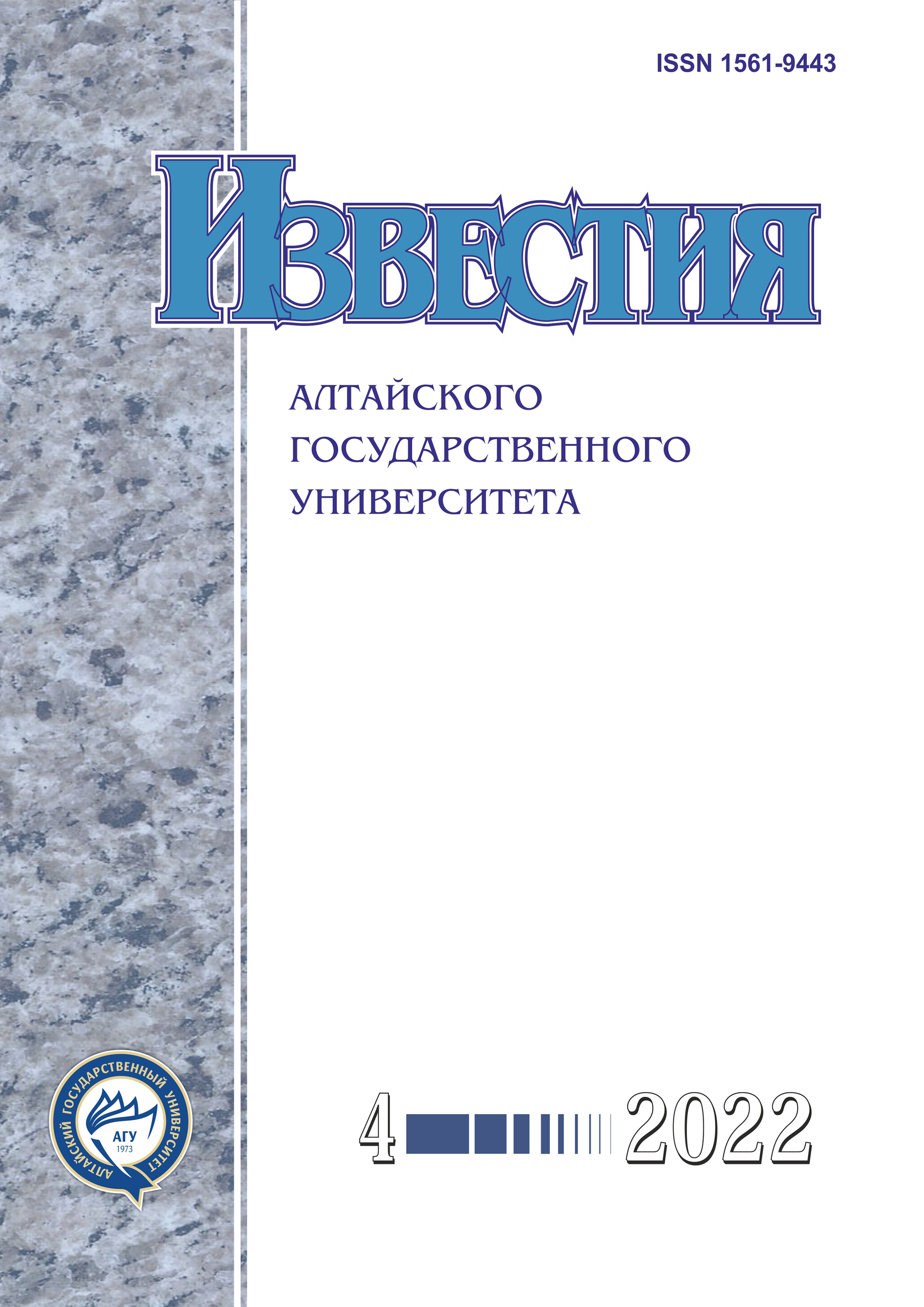Modeling a Potential Plant Habitat Using Machine Learning Methods
УДК 519.67, 551.581.1
Abstract
The article is devoted to modeling the potential distribution area of the species Pulsatilla turczaninovii Kryl. et Serg. Plant ecological niche modeling is the process of building models using modern computer algorithms and bioclimatic data to predict the distribution range of plant species. The result of the simulation is a model that can be used to map the area of growth or residence of species, predict the range or analyze the impact of the environment on species.
Data are required on both the presence of species and their absence in a particular territory to build effective models for predicting ecological niches of plants. View absence points (or background points) are not registered in databases, but can be generated using different approaches.
This article describes the implementation of three approaches to selecting pseudo-absence points of species in an operationally divided territory and presents the result of modeling the potential distribution area of the species Pulsatilla turczaninovii Kryl. et Serg. using the random forest algorithm — the most popular way to build ensembles of decision trees. The software implementation of the model is carried out in the high-level Python programming language.
Downloads
Metrics
References
Guisan A., Thuiller W. Predicting species distribution: offering more than simple habitat models // Ecology letters. 2005. Vol. 8. № 9.
Зайков В.Ф., Ваганов А.В., Шмаков А.И. Климатическое моделирование потенциального ареала Pulsatilla turczaninovii Кгу1. et Serg. (Ranunculaceae) на территории Евразии // Теоретическая и прикладная экология, 2022. № 1.
Ваганов А.В., Покалякин З.В., Хворова Л.А. Комплексное решение задач оценки растительных ресурсов методами ГИС и климатического моделирования // Проблемы ботаники Южной Сибири и Монголии. 2021. Т. 20, № 1.
Макунина Н.И., Егорова А.В., Писаренко О.Ю. Построение потенциальных ареалов растительных сообществ с целью ботанико-географического районирования (на примере лесов Тувы) // Сибирский экологический журнал. 2020. № 4. DOI: 10.1134/s1995425520040095.
Дудов С.В. Моделирование распространения видов по данным рельефа и дистанционного зондирования на примере сосудистых растений нижнего горного пояса хр. Тукурингра (Зейский заповедник, Амурская область) // Журнал общей биологии. 2016. Т. 77. № 2.
Elith J., Leathwick J.R. Species distribution models: ecological explanation and prediction across space and time // Annual Rev. Ecol. Evol. Systematics. 2009. Vol. 40. DOI: 10.1146/annurev.ecolsys.110308.120159.
Global Biodiversity Information Facility (GBIF) Occurrence Download (accessed: 20.12.2019). DOI: 10.15468/ dl.4khq61.
Barbet-Massin M., Jiguet F., Albert C.H., Thuiller W Selecting pseudo-absences for species distribution models: how, where and how many? https://besjournals.onlinelibrary. wiley.com/doi/10.1111/j.2041-210X.2011.00172.x.WorldClim. https://www.worldclim.com/node/] (дата обращения: 30.04.2022).
Thuiller W., Lafourcade B., Engler R., Araujo M.B. BIOMOD — a platform for ensemble forecasting of species distributions // Ecography. 2009. Vol. 32. № 3.
Полетаева Н.Г. Классификация систем машинного обучения // Вестник Балтийского федерального ун-та. 2020. № 1.
Anderson R. P., Lew D., Peterson A. T. Evaluating predictive models of species’ distributions: criteria for selecting models // Ecological Modelling. 2003. Vol. 162. DOI: 10.1016/ s0304-3800(02)00349-6.
Barthlott W., Biedinger N., Braun G., Feig F., Kier G., Mutke J. Terminological and Methodological Aspects of the Mapping and Analysis of the Global Biodiversity // Acta Bot. Fennica, 1999. Vol. 162.
Austin M. Species distribution models and ecological theory: A critical assessment and some possible new approaches // Ecol. Model. 2007. Vol. 200. DOI: 10.1016/j. ecolmodel.2006.07.005.
Brown J.L. SDMtoolbox: a python-based GIS toolkit for landscape genetic, biogeographic and species distribution model analyses // Methods in Ecology and Evolution. 2014. Vol. 5. № 7. DOI: 10.Ш1/2041-210Х.12200.
Кoрзников К.А. Климатическое моделирование местообитания Kalopanax septemlobus и Phellodendron amurense var. sachalinense в островном секторе Дальнего Востока России // Известия РАН. Серия биологическая. 2019. № 6. DOI: 10.1134/S0002332919040088.
Hallgren W, Beaumont L., Bowness A., Chambers L., Graham E., Holewa, H., Laffan S., Mackey B., Nix H., Price J., Vanderwal J., Warren R., Weis G. The Biodiversity and Climate Change Virtual Laboratory: Where ecology meets big data // Environmental Modelling and Softwareю 2016. № 76. DOI: 1016/j.envsoft.2015.10.025.
Copyright (c) 2022 Алексей Владимирович Ваганов , Владимир Федорович Зайков , Ольга Сергеевна Кротова , Андрей Игоревич Мусохранов , Захар Валерьевич Покалякин , Любовь Анатольевна Хворова

This work is licensed under a Creative Commons Attribution 4.0 International License.
Izvestiya of Altai State University is a golden publisher, as we allow self-archiving, but most importantly we are fully transparent about your rights.
Authors may present and discuss their findings ahead of publication: at biological or scientific conferences, on preprint servers, in public databases, and in blogs, wikis, tweets, and other informal communication channels.
Izvestiya of Altai State University allows authors to deposit manuscripts (currently under review or those for intended submission to Izvestiya of Altai State University) in non-commercial, pre-print servers such as ArXiv.
Authors who publish with this journal agree to the following terms:
- Authors retain copyright and grant the journal right of first publication with the work simultaneously licensed under a Creative Commons Attribution License (CC BY 4.0) that allows others to share the work with an acknowledgement of the work's authorship and initial publication in this journal.
- Authors are able to enter into separate, additional contractual arrangements for the non-exclusive distribution of the journal's published version of the work (e.g., post it to an institutional repository or publish it in a book), with an acknowledgement of its initial publication in this journal.
- Authors are permitted and encouraged to post their work online (e.g., in institutional repositories or on their website) prior to and during the submission process, as it can lead to productive exchanges, as well as earlier and greater citation of published work (See The Effect of Open Access).








